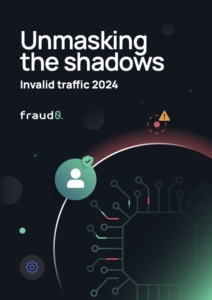“fraud0 detects the bots on our website and helps us to initiate appropriate measures.”

Mark Ngauv
5/5
Managing Director / CMO @ RUFF CYCLES

Learn everything you need to know about Invalid Traffic in 2024 based on our customers’ data. Including a breakdown into marketing channels, industries and much more.
Up to 25 % of your marketing budget is wasted. Detect and mitigate bots and invalid traffic in real time with AI. Optimize your advertising campaigns and make smarter data-driven decisions.


Our analytics dashboard empowers you to make better decisions by giving you a holistic view of your traffic and notifying you immediately of suspicious traffic behavior.

Our AI-powered bot detection allows you to intercept bots in real time and take further action based on their signals.
Enhance audience quality and protect your ad placements so that every campaign reaches its true potential with precision and protection.


Our AI-powered algorithm analyzes millions of requests, data points and behavioral patterns every day to provide you with actionable information about your traffic in real time.
Take back control over your data and try fraud0.











Already have an account? Log in